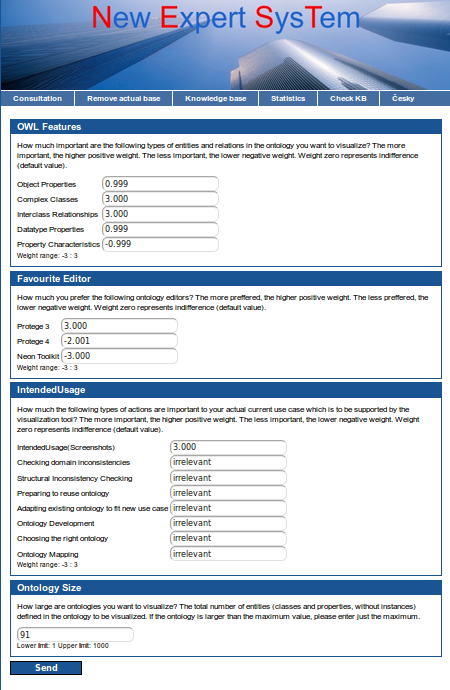Knowledge base
Knowledge base for Ontology Visualization Tools Recommender contains 8 attributes, 36 propositions, 32 compositional rules and 1 apriori rule. Abstracted inference network is depicted in Figure below. Relationships between attributes in Figure below indicate groups of compositional rules which are, in fact, based on their propositions. Full inference network is available below. Knowledge base has three layers. Upper layer only contains one node representing decision about suitable visualization tool: Protégé Entity Browser, TGVizTab, Ontoviz, Jambalaya, OWLViz, Ontograf, OWLGrEd, OntologyVisualizer, KC-Viz, SOVA and TopBraid. Middle layer contains two nodes which aggregate relevant answers from an user: Use case category (editing, inspection, learning and sharing) and OWL (expressing an importance of OWL features). Lower layer represents questions for an user:
- Complex classes - an importance of anonymous classes based on various OWL constructs such as union, complement, intersection etc.
- Intended usage - actions which should be supported: screenshots, checking domain inconsistencies, structural inconsistency checking, preparing to reuse ontology, adapting existing ontology to fit new use case, ontology development, choosing the right ontology and ontology mapping.
- Ontology size - three fuzzy intervals covering small, medium and large ontologies.
- OWL features - inspecting an importance of certain kinds of OWL features in order to infer overall importance of OWL support in visualization: object properties, interclass relationships, datatype properties and property characteristics.
- Favourite ontology editor - capturing an user preference of some ontology editor: Protégé 3, Protégé 4, Neon Toolkit.
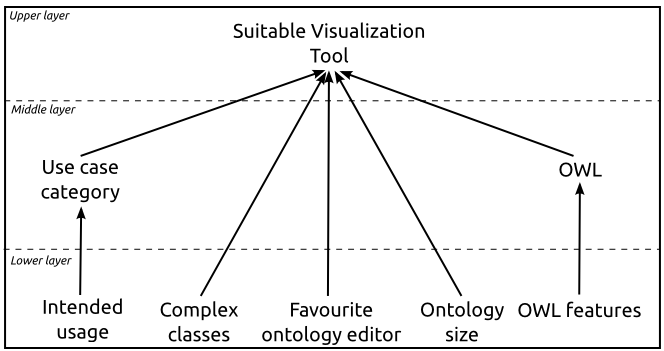
Full inference network (as screenshot from NEST editor) is showed below:

Starting Ontology Visualization Tool Recommendation
Ontology Visualization Tools Recommender is available from three different user interfaces:
- Tailored web interface for the Ontology Visualization Tools Recommender. There, for expressing uncertainty you can use either word expressions of uncertainty (mapped to weights) or directly weights.
- General web-based NEST user interface.
- NEST desktop version featuring knowledge base editor and the inference explanation etc.
Demonstration of the recommender in action
The following screenshots demonstrate (using General web-based NEST user interface. Tailored web interface is more intuitive, therefore we only provide screenshots from the general web-based NEST user interface.) usage of the recommender according to the example from page 11-12 in the paper. Initial screenshot of the web-based NEST after clicking on the link provided within the section above. In order to start the recommender click on "consult" button.
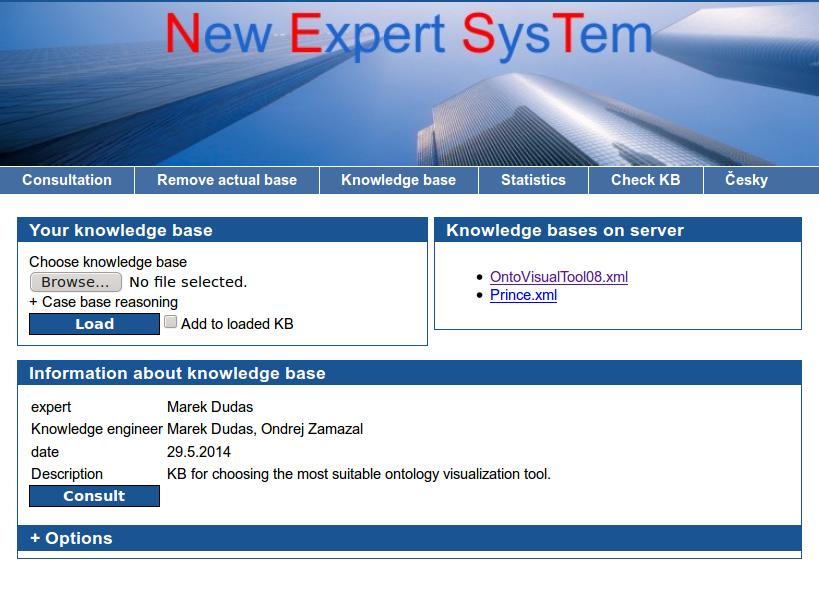
Through the consultation the recommender asks as many questions as necessary in order to arrive to as precise conclusion as possible (this is not true for the tailored web user interface since all the questions are available at once). In order to demonstrate the example from the paper (p. 11-12) we will enter the same values. In general, NEST system allows us to enter weights (here within the interval <-3;3>) representing the importance of given attribute/feature: the more important, the higher positive weight. The less important, the lower negative weight. Weight zero represents indifference (default value). Let's enter the weights for the OWL features and click on "send" button:

Let's enter the weights regarding the intended usage and click on "send" button. Propositions without weights entered are interpreted as indifferent (weight zero):

Let's enter the weights regarding our favourite editor and click on "send" button:
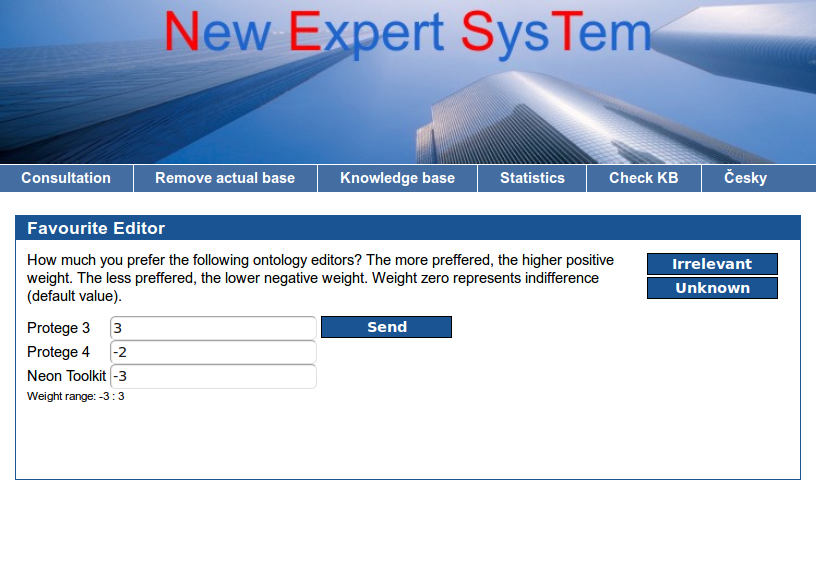
Besides weights, the system can ask for numbers which are then automatically converted to fuzzy intervals with computed weights. Let's enter the size of given ontology and click on "send" button:
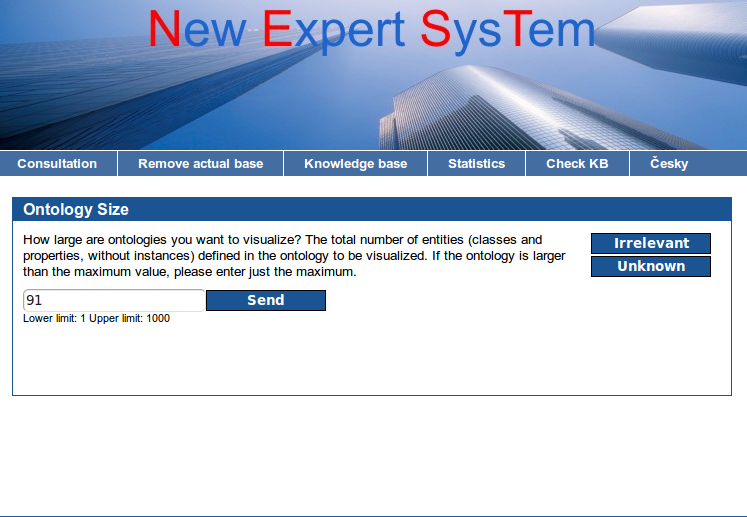
The size of an ontology was the last question of the system after which we can received recommendations:
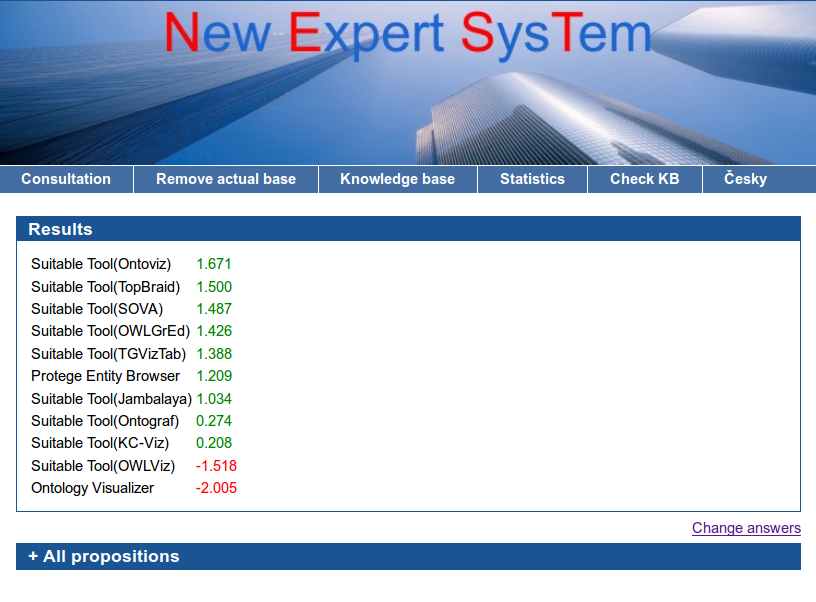
Afterwards, you can check entered or computed weights for "all propositions" (at the bottom on the screenshot above) or you can even display all your answers (the link down on the right-hand side "change answers"). You can change any of your answer and receive new recommendations:
